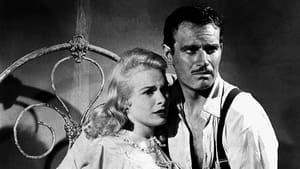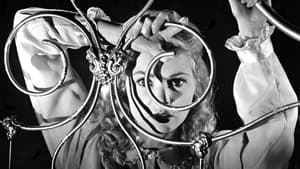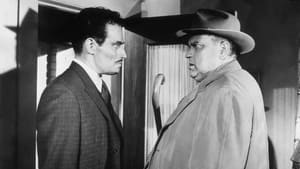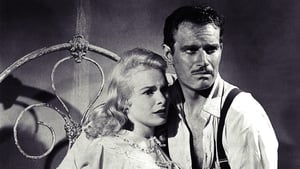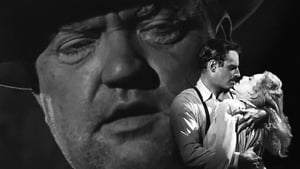Contact: [email protected]
Video Sources 0 Views
- Watch trailer
- Touch of Evil Colorized


Synopsis
[ez-toc]





Introduction
In the ever-evolving landscape of cinema, the debate over colorization has stirred controversies and ignited discussions among film enthusiasts. Old films, especially those cherished for their black and white aesthetics, often find themselves at the center of this debate. One such classic is “Touch of Evil Colorized, ” a 1958 film directed by the legendary Orson Welles. In this article, we delve into the history of “Touch of Evil,” analyze the impact of its recent colorized version, and explore the ongoing debate surrounding the colorization of old films.
Read Media File Transfer Agreement: Terms and Conditions
Read FAQ
The Making of Touch of Evil Colorized
Orson Welles, a cinematic trailblazer known for his innovative storytelling and directorial prowess, helmed “Touch of Evil” with a vision that would leave an indelible mark on film history. The movie, categorized within the film noir genre, boasts an ensemble cast featuring Charlton Heston and Janet Leigh. Welles’ distinct approach to storytelling and character development, combined with the atmospheric cinematography synonymous with film noir, contributed to the film’s success.
As we dissect the production process, it becomes evident that “Touch of Evil” stands as a testament to Welles’ ability to create a gripping narrative within the constraints of a genre. The performances of the cast, particularly Heston and Leigh, add layers to the characters and elevate the film beyond the typical conventions of its time.
The Significance of the Original Black and White Version
The decision to film “Touch of Evil Colorized” in black and white was not arbitrary but a conscious aesthetic choice. The film’s noir atmosphere heavily relies on the interplay of light and shadow, emphasizing the grittiness of the narrative. The stark contrast achieved through black and white cinematography enhances the suspense and intensifies the emotional impact of the storyline.
In this section, we delve into the innovative cinematography techniques employed to craft the visual style of the film. Shadows become characters in themselves, lurking in the background and heightening the tension. The absence of color is not a limitation but a deliberate artistic choice that defines the film’s identity.
The Controversy Surrounding Colorization in Film Preservation
Colorization, the process of adding color to black and white films, has long been a contentious issue in the realm of film preservation. While proponents argue that it breathes new life into classics, purists contend that it jeopardizes the artistic integrity of the original work. In this section, we explore the various opinions surrounding the practice and its implications for preserving the authenticity of old movies.
We examine the mechanics of the colorization process and the technological advancements that have made it possible. Is colorization a respectful homage or a sacrilegious alteration? The debate rages on, and the answers may not be as black and white as the films in question.
Exploring AlwanFilm’s Colorization of Touch of Evil Colorized
AlwanFilm, a prominent name in the field of color restoration, undertook the task of breathing new life into “Touch of Evil Colorized.” In this section, we scrutinize the specific approach employed by AlwanFilm, focusing on their commitment to maintaining historical accuracy. How does AlwanFilm navigate the delicate balance between enhancing the viewing experience and preserving the original director’s intent?
Understanding the meticulous process behind the colorization allows us to appreciate the dedication to detail that AlwanFilm brings to the table. The question arises: can colorization be an art form in itself, respecting the past while embracing the possibilities of the present?
Analyzing the Colorized Version: Does It Enhance or Diminish the Film?
Now, we turn our attention to the heart of the matter – the colorized version of “Touch of Evil Colorized.” How does the addition of color impact the mood, tone, and overall storytelling? We conduct a thorough analysis, comparing scenes from the original black and white version to their colorized counterparts.
Does the infusion of color breathe new life into the narrative, or does it dilute the essence of the film? Through a critical lens, we explore the visual impact of colorization on key elements such as character dynamics, setting, and emotional resonance. The dichotomy of color versus monochrome becomes a canvas upon which the film’s merits and drawbacks are painted.
The Enduring Legacy of Touch of Evil Colorized
As we navigate through the annals of film history, certain works stand out as pillars influencing generations of filmmakers. “Touch of Evil” is undeniably one such cornerstone, leaving an enduring legacy within the noir genre. In this section, we delve into the film’s impact on subsequent works, exploring references made by renowned directors like David Lynch and Woody Allen.
Marlene Dietrich’s iconic presence and Welles’ directorial fingerprints extend far beyond the film’s runtime, shaping the artistic landscape of cinema for years to come. We examine how “Touch of Evil” transcends its temporal boundaries, continuing to inspire and captivate audiences.
Embracing Both Versions: Appreciating Touch of Evil in Black and White and Color
In the final stretch of our exploration, we advocate for a nuanced perspective that embraces both the original black and white version and its colorized counterpart. Each version offers a unique lens through which audiences can appreciate the cinematic masterpiece that is “Touch of Evil.”
We acknowledge the importance of preserving the artistic intent of the original work while recognizing the value of reinterpretation through color. The final thoughts invite viewers to explore the film in both forms, allowing personal preference to guide the experience. In doing so, we celebrate the duality of “Touch of Evil Colorized,” a film that continues to captivate audiences in monochrome and in color, embodying the timeless nature of its narrative.
